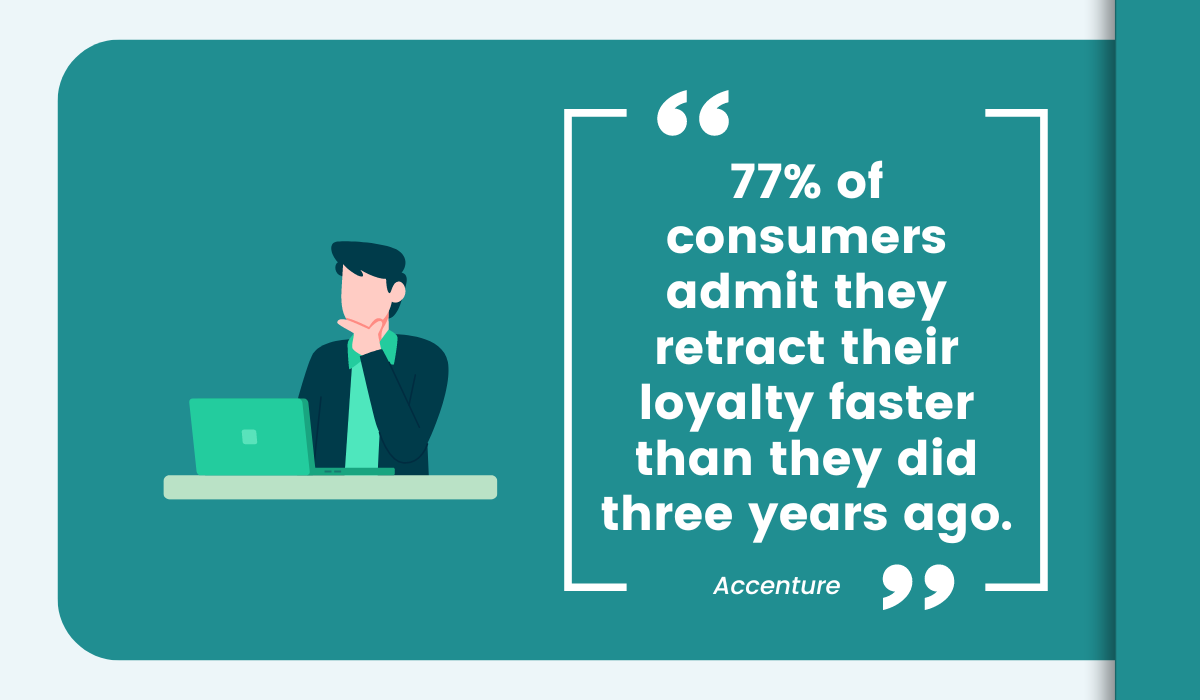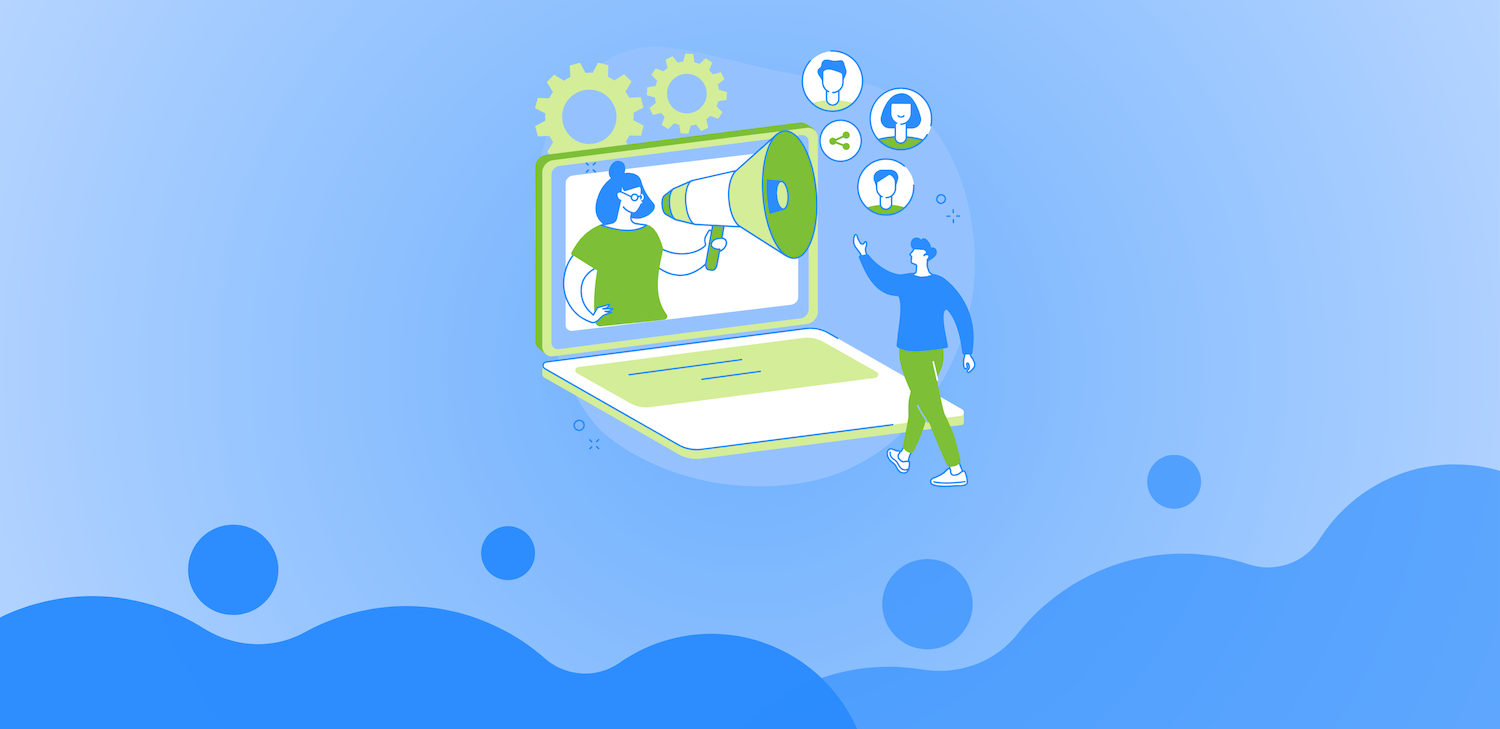Here Are 6 Unexpected ROIs You Get From Investing In Customer Loyalty
If someone tries to take a lazy approach to calculating the exact return on investment (ROI) of loyalty programs, they’ll probably be in for a...
Services
Promotions
.
Featured Guide
Industries
Resources
Explore
4 min read

With the proliferation of “plug-and-play” SaaS technology platforms for eCommerce, Retail, consumer goods, etc., loyalty programs are more prevalent than ever. Brands are investing heavily in these programs, hoping to grow deeper relationships with their customers - after all, 85%+ of revenue comes from repeat customers, and growth is every brand’s goal. As new generations enter the market, loyalty programs are widely accepted and seen as table stakes for many consumers.
However, recent research by Accenture (“Seeing Beyond the Loyalty Illusion,” 2021) reveals a startling statistic:
“77% of consumers admit they retract their loyalty faster than they did three years ago.”
In other words, up to 77% of your loyalty program members enroll with a likelihood of disengaging within the first few months of their membership! This finding signals a significant shift in consumer behavior and suggests that traditional approaches to loyalty programs may no longer be effective. In this blog we are going to focus on two critical paths for creating successful customer loyalty programs: member enrollment and early engagement.
The Accenture report along with our own experience at Brandmovers highlights a critical issue facing brands today: the rapid erosion of customer loyalty. As consumers become more discerning and options expand, customer loyalty has become increasingly transient. This reality challenges the conventional wisdom that simply increasing the number of loyalty program enrollees will drive long-term engagement and brand affinity.
Many brands operate under the assumption that enrolling as many customers as possible in their loyalty programs will inevitably lead to higher engagement and increased sales. However, this "tonnage-based" approach that focuses heavily on the quantity of enrollees often fails to account for the quality of enrollees. Not all program members are equally valuable, and a large pool of disengaged members can dilute the loyalty program's effectiveness and skew performance metrics.
Tonnage is expensive, too! Anyone in the business of customer acquisition via media channels knows that qualified leads using the supposedly powerful filtering tools of Meta and Google and many others like them have recently increased. Cost per Acquisition (CPA) is outpacing the US Inflation rate by a lot, and that trend seems to only get worse.
Considering the performance impact and financial cost of mass enrollment, it’s clear brands need to start changing how they attract enrollees to their loyalty programs to focus on attracting the right types of customers with the highest potential to stay with the brand long-term.
Shep Hyken, a customer service expert, emphasizes this point:
.png?width=625&height=365&name=TG%20-%20Quote%202%20(1).png)
Given the challenges highlighted by the Accenture report, brands must rethink their approach to acquiring loyalty program members. Instead of focusing solely on quantity, brands should prioritize quality by targeting individuals who are more likely to engage with the loyalty program and derive value from it. Look-alike modeling, using your best program members as the goal, is one way to increase member acquisition quality. If you are starting a new loyalty program, begin with your CRM list of interested customers or your social media followers. The program itself will feed in the data you require for look-alike modeling.
According to MasterCard Services’ recent benchmark survey:
“For loyalty program acquisition, "Email outreach tops the list at 65%. Use of traditional media, while down from the 51% it garnered in 2022, remains strong at 46% this year.”
Along with rethinking how they approach member enrollment, brands should also look at how they are engaging with enrollees after initial sign-up. One of the most critical periods in a loyalty program is the first 30-60 days after enrollment. During this time, brands must make a concerted effort to engage new members and demonstrate the value of the program. Early engagement is crucial in fostering a sense of belonging and encouraging ongoing participation among your loyalty program members.
Jay Baer, a marketing strategist, highlights the significance of speed in his recent study “Time to Win”:
.png?width=625&height=365&name=TG%20-%20Quote%202%20(2).png)
Read more from Jay Baer
Several brands have successfully implemented strategies to boost early engagement in their loyalty programs. For example, Starbucks' Rewards program offers members a free drink upon signing up and additional rewards after just a few purchases. This approach not only incentivizes initial participation but also encourages frequent visits in the critical early stages.
Similarly, Sephora's Beauty Insider program provides members with immediate access to exclusive products and events, fostering a sense of exclusivity and belonging from day one. These examples illustrate how immediate and relevant rewards can drive early engagement and build lasting loyalty.
The finding that 77% of consumers retract their loyalty faster than before underscores the need for a strategic shift in how brands approach loyalty programs. By focusing on acquiring the right members and ensuring meaningful early engagement, brands can build stronger, more resilient loyalty programs that drive long-term customer retention.
Seth Godin, a renowned marketing expert, underscores the importance of relevance:
“People don't buy goods and services. They buy relations, stories, and magic.”
If you're ready to take your loyalty program to the next level and ensure you're targeting and engaging the right customers, reach out to Brandmovers today. Our strategy and design team is here to help you rethink your approach to loyalty, making your programs more effective and meaningful for your audience. Let's start a conversation and transform your customer loyalty strategy. Contact us now to learn more.
Complete a small questionnaire to grab some time with our Strategy and Design team to discuss your initiative - no strings attached!
Submit your name and business email below to get started.

If someone tries to take a lazy approach to calculating the exact return on investment (ROI) of loyalty programs, they’ll probably be in for a...
Loyalty programs have become an integral part of most marketing strategies, and for good reason. They help create lasting and profitable...

When choosing a loyalty program provider there are a number of factors to take into account before choosing “the one”. You need to sit down and see...